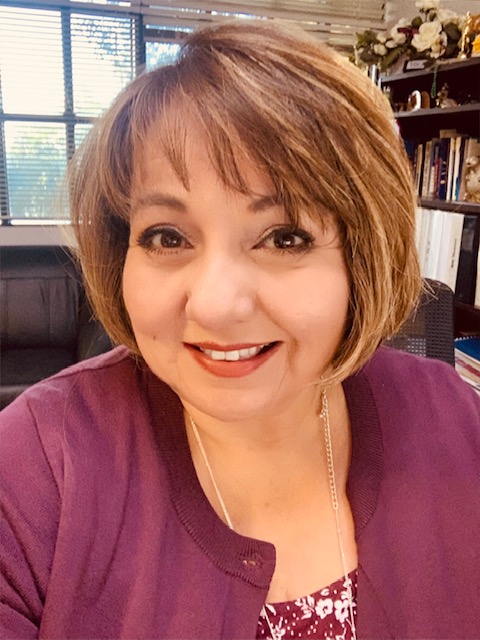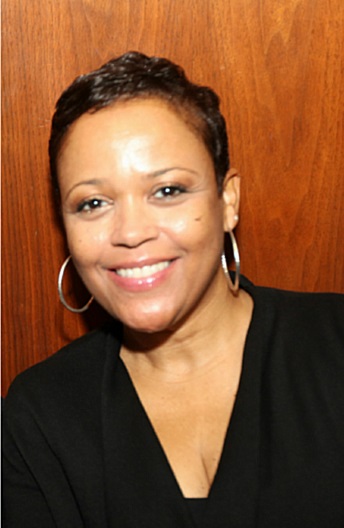
by Matt Jocks
Shermarzsai Ramsey was born to help. All she needed was a little help of her own.
When the SlingShot Regional project was launched in 2018, there were plenty of players at the table. Representatives from the education, health care and workforce development sectors were all looking for a comprehensive way to address issues and needs in the health care sector.
Proposals, innovations, partnerships and budgets followed. Ultimately, though, it was about people like Ramsey.
“Just helping people,” Ramsey says. “That’s what I’ve always wanted to do. Just being there for people. And I’ve always wanted to work with children.
“This really fit into my passion.”
Ramsey’s dream of becoming a nurse seemed a long way from realization when she was attending community college and working jobs in retail and security. It wasn’t until her godmother stumbled upon the nursing program at Downey Adult School that Ramsey’s dream began to take flight.
Aided by financial help through the SlingShot program, Ramsey was able to begin her education in training in the Certified Nursing Assistant program and in phlebotomy. The courses and hours of hands-on training has put her in position to apply for a nursing assistant placement, working toward her ultimate goal of being a registered nurse.
The CNA and phlebotomy programs are second-generation products of the SlingShot program, a regional collaboration driven by the Southeast Los Angeles County Workforce Development Board.
“This definitely involved more players being brought together (than previous collaborations). We had partnered with schools in the past, but the schools were involved here at a much deeper level.”
Teri Hollingsworth, vice president of the Hospital Association of Southern California
It began with a very specific need.

executive director of
the SELACO board
Care coordinators—individuals who can help patients negotiate through issues such as understanding the medical terminology being thrown at them, finding transportation to get treatment or dealing with insurance companies—were in short supply. Those duties were falling on already-stressed nurses.
“We started gathering educators and talking to employers,” says Yolanda Castro, executive director of the SELACO board. “We held meetings and focus groups, and the end result was developing the care coordinator curriculum for adult schools and community colleges.”
A key player in the care coordinator program was Downey Adult School principal Blanca Rochin, who helped develop and implement the curriculum. It was an easy fit because Downey Adult already had multiple courses in the medical field and because Rochin felt strongly about the care coordinator position.
“Nurses are already very busy with all the things they need to do,” Rochin says. “And certainly doctors aren’t able to do this. So who advocates for the patient? When I heard about this, I thought this was perfect. I’ve always thought this was needed, I just didn’t know what to call it.”
Enrollment numbers for the program were moderate, but Rochin says, “There were many success stories. Pretty much those who wanted to work in this field went to work.”
Beyond those individual stories, the lasting impact of the care coordinator course was in the framework of relationships that were established. The ambitious partnership of players from the academic, workforce development and health care sectors across the region set the stage for continuing programs in ambulatory nursing, phlebotomy and transition to specialty practice.

vice-president of the
Hospital Association of
Southern California
“This definitely involved more players being brought together (than previous collaborations),” says Teri Hollingsworth, vice president of the Hospital Association of Southern California, a trade association that represents more than 200 hospitals and health systems across seven counties. “We had partnered with schools in the past, but the schools were involved here at a much deeper level.”
The HASC conducted conversations and surveys with its members to identify needs and then communicated and coordinated that information with SELACO and the schools.
HealthImpact, a nursing workforce center that works with government entities, academic institutions and health employers to develop best practices, also helped shape the direction of SlingShot.
To Garrett Chan, the president and chief executive officer of HealthImpact, it is about staying ahead of a constantly changing landscape in the profession. Two examples are the need to bolster transition to practice programs, and to provide improved training for ambulatory nursing.
Nursing students are given a general education that touches on multiple specialties. When they enter the workforce, however, they must choose a specialty, forcing them to dive back into more intense training in that specialty.
“We need to build transition to practice programs,” Dr. Chan says. “The greatest number of people who leave the profession will do so in the first two years. It’s a very vulnerable time.”
Similarly, the training in registered nurse programs focus on hospital-based care. However, Chan says that about 30% of nurses will work outside the hospital, in clinics, home nursing or in public health nursing.
As health care changes, Chan says the education process needs to adapt. That means the profession must learn to see itself differently.
“Apprenticeship programs have deep roots in the trades, like plumbing, carpentry or electrical,” Chan says. “In health care, we haven’t seen ourselves as apprenticeship professions. The training has traditionally been university based.”
With SlingShot funding, however, an apprenticeship program has been approved by the California Division of Apprenticeship Standards.

program director of
workforce development
at HASC
While the care coordinator program was relatively modest, the framework it established is in the early stages of development.
“We are really building on the momentum that we had from that,” says Lisa Mitchell, program director of workforce development at HASC. “We are working with local workforce development boards to see what resources and technical support are available.”
The original focus was in Southeast Los Angeles County, but the prospect of expanding similar efforts throughout Southern California is an exciting one for Mitchell. “It’s exciting,” she says. “But it’s like a best-kept secret. There’s not enough information to amplify this because it’s something that is very vital to the workforce. And the thing is, it’s working.”
There may have been an unprecedented array of organizations and individuals working on creating this framework. None of them are known to Shermarzsai Ramsey, who only knows that the grant allowed her to attend the classes, own the uniform and begin her path.
“I’m applying for positions as a CNA and I’ll see where that takes me,” she says. “It’s everything I hoped it would be and more. It’s getting me ready to have a career that started as a dream.”
For more information on SlingShot, visit https://hasc.org/2019/10/16/slingshot-initiative-los-angeles-county-ventura-county/. Or contact California Workforce Association for information on health care training in other parts of the state at https://calworkforce.org/
This article appeared in Sacramento News & Review https://sacramento.newsreview.com/spotlight/california-workforce-association-spotlight-how-members-are-creating-career-paths-in-health-care/ and has been published here with permission.
